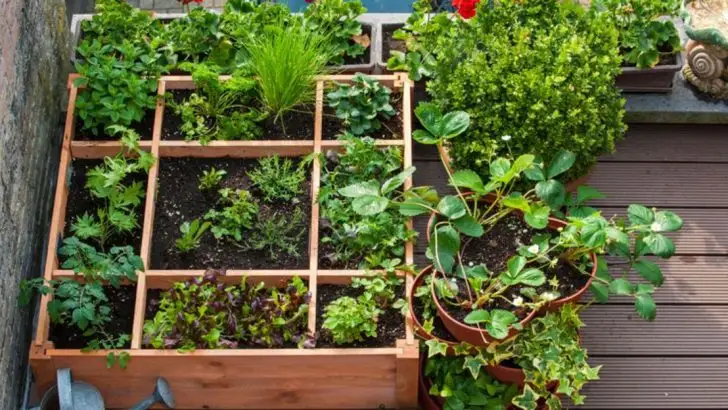Starting an herb garden on your balcony is a fantastic way to bring fresh, flavorful ingredients into your kitchen—without needing a large yard. Whether you have a small or spacious balcony, growing herbs is a rewarding and space-efficient way to enjoy homegrown produce all year round. Herbs like basil, parsley, mint, and thyme thrive in containers, making them ideal for small spaces.
In this guide, we’ll walk you through 10 easy steps to start your own balcony herb garden, from choosing the right containers to creating the perfect growing conditions. With just a little time and effort, you’ll be able to enjoy a constant supply of fresh herbs right at your doorstep!
Assess Your Space
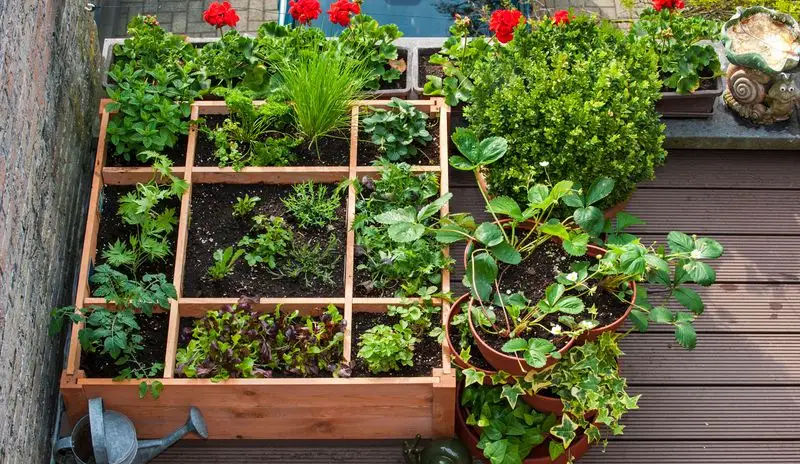
Begin by analyzing your balcony’s layout and determining how much sunlight it gets daily. This assessment helps in choosing the right spot for your herbs, especially since most require around 6 hours of sunlight. Consider using vertical space or railings for hanging pots to maximize area. Even a small corner can become a thriving garden with careful planning. Prioritize accessibility and ensure a water source is nearby for easy maintenance. These initial considerations form the backbone of your gardening success.
Select the Right Herbs

Choose herbs that suit your culinary preferences and the climatic conditions of your area. Basil, mint, rosemary, and thyme are popular choices that thrive in pots. It’s beneficial to research which herbs are perennial or annual, aiding in long-term planning for your garden. Consider starting with seedlings for faster results, especially if you’re new to gardening. A diverse selection not only adds flavor to your dishes but also enhances the visual appeal of your balcony garden. Your selection sets the tone for your entire gardening journey.
Invest in Quality Pots
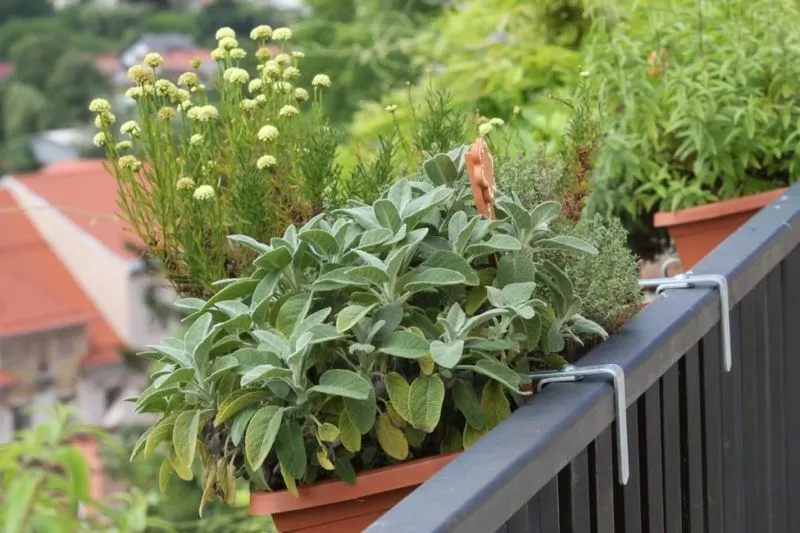
Selecting the right pots is crucial for your herb garden’s health. Choose containers with good drainage to prevent waterlogging, which can harm root systems. Consider various materials like terracotta, plastic, or ceramic based on your aesthetic preference and budget. Ensure the pots are proportionate to the herb’s growth potential; larger herbs need bigger pots. Investing in quality pots ensures your plants have a stable environment to grow, thrive, and save you money in the long run by reducing replacements.
Use Suitable Potting Mix
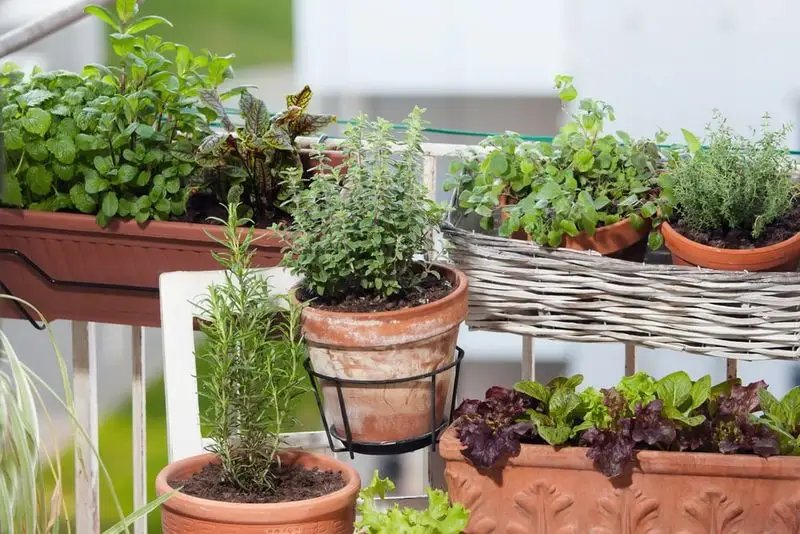
A high-quality potting mix is essential for healthy herb growth. Opt for a mix that retains moisture but drains well to prevent root rot. Many mixes come with added nutrients or you can enhance them with compost or organic fertilizers. Avoid using garden soil in pots, as it can compact and restrict root growth. Tailor your mix to the specific needs of herbs you’re growing. This foundation supports robust plant health and productivity, ensuring a thriving herb garden on your balcony.
Plan for Watering Needs
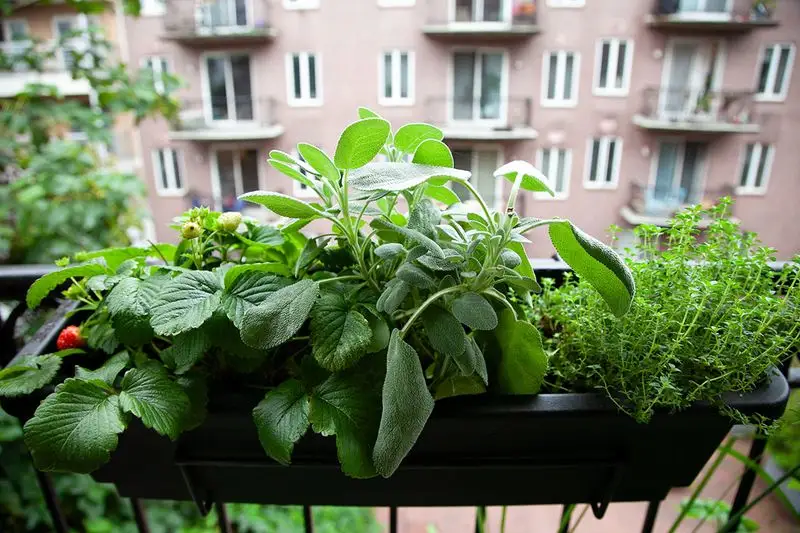
Herbs have varying water requirements, so understanding each plant’s needs is vital. Group herbs with similar watering schedules to simplify maintenance. Consider investing in a watering can with a fine spout for precision or a drip irrigation system for efficiency. Regularly check soil moisture, especially in hot weather when pots dry out quickly. A consistent watering routine promotes healthy growth and prevents common issues like root rot or wilting, keeping your balcony garden vibrant and productive.
Ensure Proper Drainage
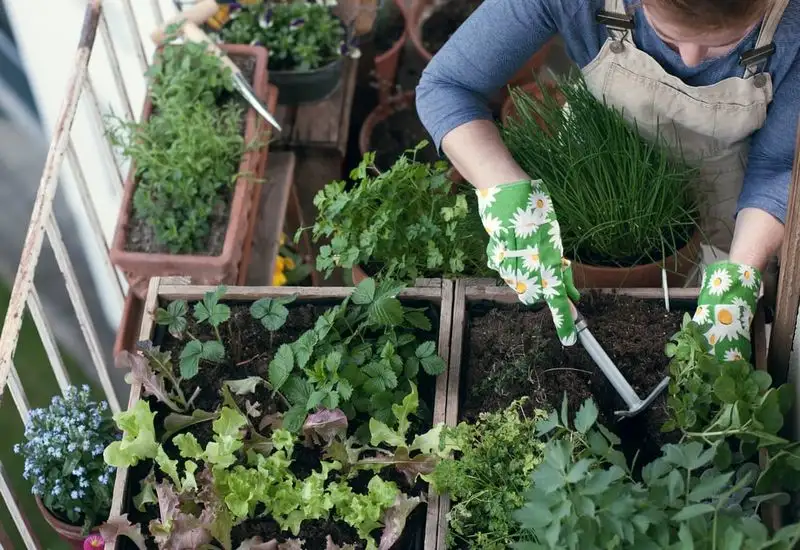
Without proper drainage, herbs are susceptible to root rot, a common issue in container gardening. Ensure pots have adequate drainage holes and use saucers to catch excess water. Consider adding a layer of gravel at the bottom of pots to improve drainage further. Regularly monitor drainage effectiveness after heavy rains or overwatering. A well-drained pot encourages healthy root development and prevents water stagnation, which is crucial for the longevity of your balcony herb garden.
Monitor Sunlight Exposure

Keeping track of how much sunlight your herbs receive throughout the day is key to their success. Most herbs thrive with a minimum of 6 hours of sunlight daily. Adjust the placement of pots as necessary to ensure they receive adequate light. In areas with intense sun, consider using shade cloths to protect sensitive plants. By observing your garden’s sun exposure patterns, you can make informed decisions that boost your herbs’ growth and flavor, ensuring a productive garden.
Implement Pest Control
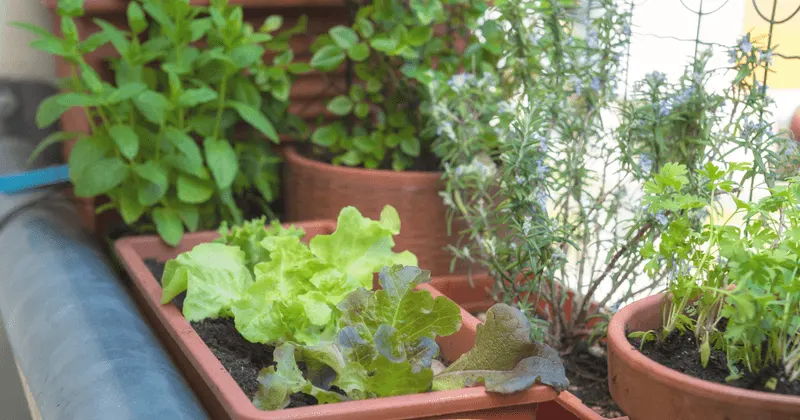
Balcony herb gardens can attract pests, but natural solutions offer effective control. Introduce beneficial insects like ladybugs or use neem oil and insecticidal soap to stave off harmful bugs. Regularly inspect your plants for signs of infestation, such as discolored leaves or webs. Encourage a healthy ecosystem by avoiding chemical pesticides, which can affect your herbs’ flavor. With proactive pest management, your herbs remain healthy and productive without harmful chemicals, supporting an organic gardening approach.
Harvest Regularly
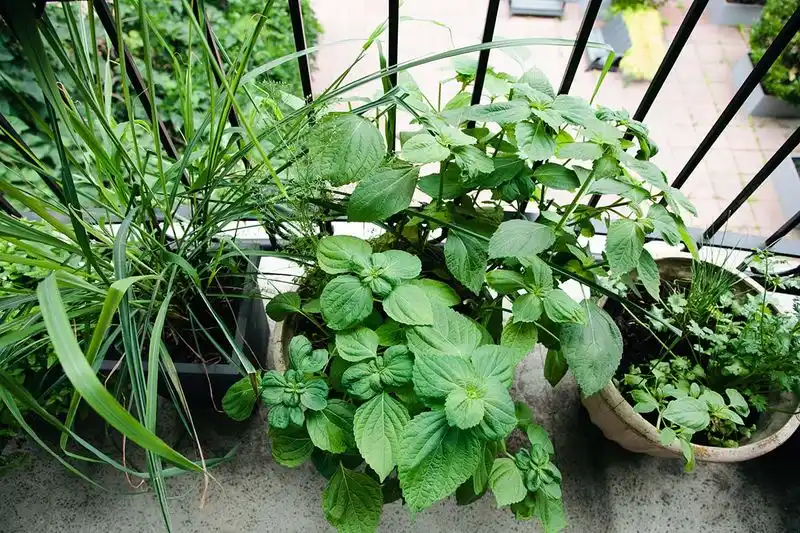
Frequent harvesting encourages new growth in herbs, keeping them lush and productive. Learn the best harvesting techniques for each herb, like pinching basil leaves from the top to promote bushiness. Use fresh trimmings in your meals or dry them for future use. Regular harvesting not only provides a continuous supply of fresh herbs but also prevents plants from becoming leggy and flowering prematurely. This practice is rewarding and integral to maintaining a thriving herb garden on your balcony.
Plan for Seasonal Changes
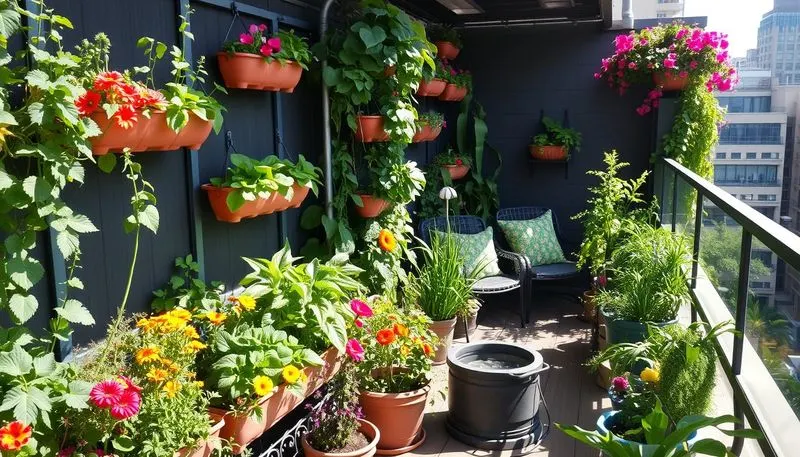
Seasonal transitions require strategic planning to maintain your herb garden. In colder months, bring sensitive herbs indoors or provide protection with frost cloths. Understand when to sow seeds for spring growth and plan for annual herbs’ lifecycle. Adjust watering and sunlight exposure as seasons change to support ongoing herb health. This foresight ensures your garden remains vibrant throughout the year, offering a year-round supply of fresh herbs and continuously beautifying your balcony space.

